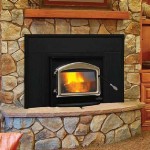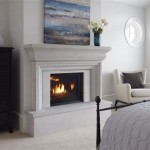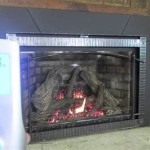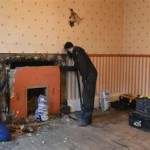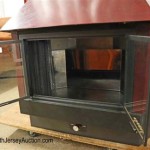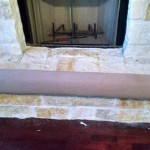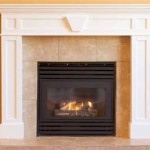How to Open a Fireplace Damper Chain
A fireplace is a traditional focal point in many homes, providing warmth and ambiance during colder months. However, a fireplace’s effectiveness relies heavily on its damper system. The damper, a metal plate located within the chimney, controls the airflow. A closed damper prevents drafts from entering the home when the fireplace is not in use and helps to regulate the fire's intensity when it is. Understanding how to properly open the damper, particularly when it utilizes a chain mechanism, is crucial for safe and efficient fireplace operation. This article details the process of opening a fireplace damper chain, focusing on safety, maintenance, and troubleshooting common issues.
Before initiating any fire, ensuring the damper is fully open is paramount. Burning a fire with a closed or partially closed damper can result in dangerous conditions, including smoke inhalation and carbon monoxide poisoning. Furthermore, it can lead to a backdraft, pushing smoke and soot into the living space. Prior to starting the fire, carefully inspect the fireplace and surrounding area for any obstructions or potential hazards.
Identifying the Damper Chain Mechanism
The first step in opening a fireplace damper chain involves accurately identifying the type of damper system present. Older fireplaces often utilize a chain and pulley system to control the damper. This system typically consists of a chain hanging down from the top of the firebox, connected to a lever or plate within the chimney flue. The chain is usually affixed to a handle or ring for ease of manipulation. The location of the chain can vary depending on the fireplace design, but it is typically found near the top opening of the firebox. Inspect the opening of the fireplace meticulously, looking for a chain that extends upward into the chimney. In some cases, the chain may be partially obscured by soot or debris.
It is important to differentiate a damper chain from other chains that might be present in the fireplace, such as those used for decorative purposes or to support a fire screen. The damper chain is the only one that directly connects to the damper plate within the chimney. If there is any doubt, consult the fireplace's instruction manual or contact a qualified chimney sweep for assistance.
Once the damper chain is located, assess its condition. Check for any signs of rust, corrosion, or damage. A compromised chain can break, making it difficult or impossible to operate the damper. If the chain appears to be in poor condition, replacement is recommended before using the fireplace. A qualified professional can safely replace the chain and ensure proper damper function.
The Process of Opening the Damper Chain
After identifying and inspecting the damper chain, the next step is to open the damper. The specific method for opening the damper chain can vary slightly depending on the design of the system, but the underlying principle remains the same: manipulating the chain to lift the damper plate within the chimney flue.
Grip the handle or ring attached to the damper chain firmly. Gently pull the chain downwards. As you pull down, observe the damper plate within the chimney. You should see it begin to lift or pivot upwards. The required amount of force will depend on the weight and condition of the damper plate, as well as any resistance caused by soot buildup. Avoid using excessive force, as this could damage the chain or the damper mechanism itself.
Continue pulling the chain until the damper plate is fully open. A fully open damper will allow for maximum airflow through the chimney. This is essential for efficiently venting smoke and preventing backdrafts. Once the damper is open, ensure it remains securely in the open position. Some damper chain systems have a locking mechanism that prevents the damper from accidentally closing during use. If no locking mechanism exists, ensure the weight of the chain is sufficient to hold the damper open.
Before lighting a fire, double-check that the damper is indeed fully open. Use a flashlight to visually inspect the chimney flue and confirm that the damper plate is in the fully open position. This simple check can prevent serious safety hazards.
Troubleshooting Common Issues and Maintenance
Even with proper care, damper chains can experience issues that hinder their functionality. Common problems include stiff chains, rusted components, and difficulty in opening or closing the damper. Regular maintenance can help prevent these issues and ensure the damper operates smoothly.
One common problem is a stiff or difficult-to-move damper chain. This can be caused by soot buildup, rust, or corrosion. Applying a lubricant, such as graphite powder or a specialized chimney lubricant, to the chain and pulley system can often resolve this issue. Avoid using oil-based lubricants, as these can attract dust and soot, exacerbating the problem. Apply the lubricant sparingly and work the chain back and forth to distribute it evenly.
Another common issue is a rusted or corroded chain. Rust can weaken the chain and make it more likely to break. If the chain exhibits significant rust, it should be replaced. Light surface rust can sometimes be removed with a wire brush and treated with a rust inhibitor. However, replacement is generally the safest option for severely rusted chains.
Difficulty opening or closing the damper can also be caused by obstructions within the chimney flue. Birds' nests, leaves, and other debris can block the damper plate and prevent it from moving freely. A professional chimney sweep can remove these obstructions and ensure the damper operates properly. Regular chimney inspections and cleanings are essential for maintaining a safe and efficient fireplace.
Finally, it is crucial to periodically inspect the entire damper mechanism for any signs of damage or wear. This includes the chain, the pulley system (if applicable), and the damper plate itself. If any components are damaged, they should be replaced promptly. Attempting to use a fireplace with a damaged damper can be dangerous and can lead to further damage to the fireplace and chimney.
Regular maintenance of the fireplace damper chain, including lubrication, cleaning, and inspection, is crucial for ensuring its proper function and preventing potential safety hazards. By understanding the mechanism, following the proper opening procedure, and addressing common issues promptly, homeowners can enjoy the warmth and ambiance of their fireplace safely and efficiently. Remember to consult with a qualified professional for any repairs or maintenance that exceed your skill level or comfort zone.

How To Open A Chimney Damper Traditional Fireplace Pros

How To Open Your Chimney Damper And Tell If It S Or Closed Priddy Solutions

How To Open A Chimney Damper Traditional Fireplace Pros

Install A Damper In Any Vented Fireplace Chimney Flue Gas Grills Parts Fireplaces And Service

Chimney Damper Usage Montgomery County Pa Wells

How To Use A Fireplace Damper The Right Way

The Pull Chain On My Firplace Damper Broke How Do I Re Place It

Nicholas Chimney Sweeping Stove Fireplace Services Vienna Virginia

How To Open Your Chimney Damper And Tell If It S Or Closed Priddy Solutions

Lock Top Energy Saving Damper Operating Instructions Rockford Chimney
Related Posts

